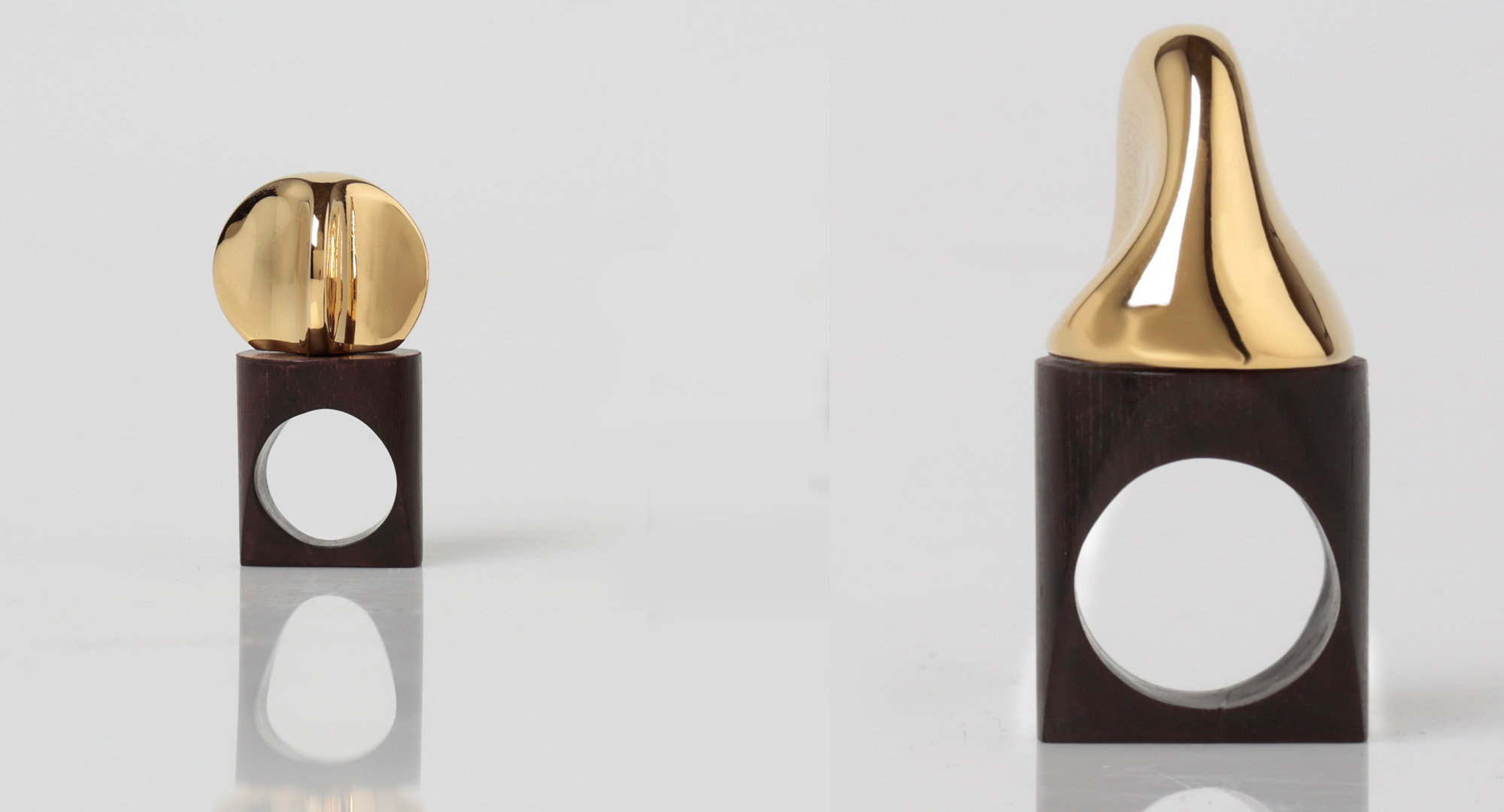Who says jewelry can’t be both beautiful and therapeutic? Charlotte Garnett, the “Anti-Anxiety Jeweler,” makes fine jewelry to be used intuitively and worn proudly.
Jewelry designer Charlotte Garnett does not see her anxiety as a detriment. Instead, she blends it into a radiant, everlasting art form. “Why fight against something that is so integral to who I am?” said Garnett.
Garnett struggled to conform in her small hometown of Newbury, England. Not knowing where to put her emotions, art became her catharsis. She found that painting her emotions wasn’t enough to convey her feelings in her A-level art classes. “I could make a painting that was really emotional and really poured my heart out, and people would look at it, understand it, and then leave,” said Garnett. She felt her art lacked a resonating impact. Jewelry filled this gap.
“It’s such an emotional art form, so becoming attached to the tangible emotion in the world through an art form–that was it. I never went back.“
Her journey to jewelry was unprecedented. She created a cabin from the Titanic in her school’s basement for a school assignment. Wholly absorbed in the endeavor, she dedicated herself to recreating a Titanic victim’s personal artifacts. She began “obsessively creating” little pieces of jewelry resembling those that belonged to the victim. It soon hit her that she could take the jewelry out of the room with her. “This lasts. This is something tangible in the real world,” said Charlotte. “And it was that quality of tangibleness that completely fixed me to jewelry as a medium.”
It could be a mother’s necklace, a wedding ring, or a friendship bracelet. Everyone has that piece of jewelry that carries a strong emotional connection. “It’s such an emotional art form, so becoming attached to the tangible emotion in the world through an art form–that was it. I never went back.” So, she decided to move to London and study jewelry design at Central Saint Martins.
Competing with her graduate collection, Garnett won the Bright Young Gems competition, an initiative famous for unveiling contemporary jewelry stars. From there, she met Shaun Leane, a jewelry designer and Sarabande patron who selected her as part of the Foundation’s first generation of artists. The Sarabande Foundation was set up by the late Lee Alexander McQueen to support creative minds by providing selected artists with scholarships and studio space.
“Sarabande was a really vital part in my development as an artist,” said Garnett. It saved her from the “floundering feeling” of graduating from art school. It provided the literal support of 24-hour studio space and the emotional support of being seen as a contemporary and peer to other artists.
“It wasn’t really until my third year in my jewelry design course that I found the correct niche for me, which was to bring functionality to my work.”
Garnett’s approach to jewelry goes beyond adornments, though. “It wasn’t really until my third year in my jewelry design course that I found the correct niche for me, which was to bring functionality to my work,” said Garnett. She calls herself the “Anti-Anxiety Jeweler,” as her work focuses on her experiences as a neurodivergent, anxious person. The jewelry provides a tangible tool for everyday anxiety through object-handling therapy, grounding, and mindfulness.
How the pieces influence the body, not the final look, inspires her. “My jewelry starts with touch,” Garnett’s jewelry is ergonomic, meaning that it is designed to respond to the touch and the anxious need for movement. She offered the necklace she was wearing as an example. It encourages her to draw her arm across her chest and hold herself when stressed in public. The tactile element, a spinning pendant, keeps her attention. Its design keeps the wearer in a comforting position while occupying the mind.
Everyone, especially overly anxious people, have subconscious, repetitive behaviors. “Once you see it, you’ll never unsee it,” said Garnett. Sometimes, they can be harmful, like picking eyelashes or hair pulling. People suggested painful coping skills to Garnett, like pinging an elastic band against her wrist. Recognizing the need for tactile play, she sought to create a coping mechanism that wasn’t as embarrassing– “something that was desirable and functional at the same time.”
“It’s always been an unshakable part of my life that can’t be put to one side,” Garnett said about her mental health. Neurodiversity isn’t something that can be cured for most people. “Yes, it’s cumbersome. Yes, it is a heavy load to bear a lot of the time, but it gives me a really unique perspective that other people don’t necessarily have,” she said.
“Yes, it is a heavy load to bear a lot of the time, but it gives me a really unique perspective that other people don’t necessarily have.”
Garnett encourages anyone who sees a difference in themselves as a negative to search for a way to make their perspective on the world exceptional and relate it to others. “Once we can find a way to develop that into something that can benefit ourselves, or just harness that difference in perspective, that’s really powerful, and it gives us back control over the situation,” she shared. She suggests finding a community, whether it be of artists or other neurodivergent people. Garnett is proof that being neurodivergent can be a tool for helping oneself and others alike.
Homepage image: Mini and large anti anxiety spoons. Above images: Left, Jax Spinner ring; right, Pinch Spinner ring. All images courtesy of Charlotte Garnett.





